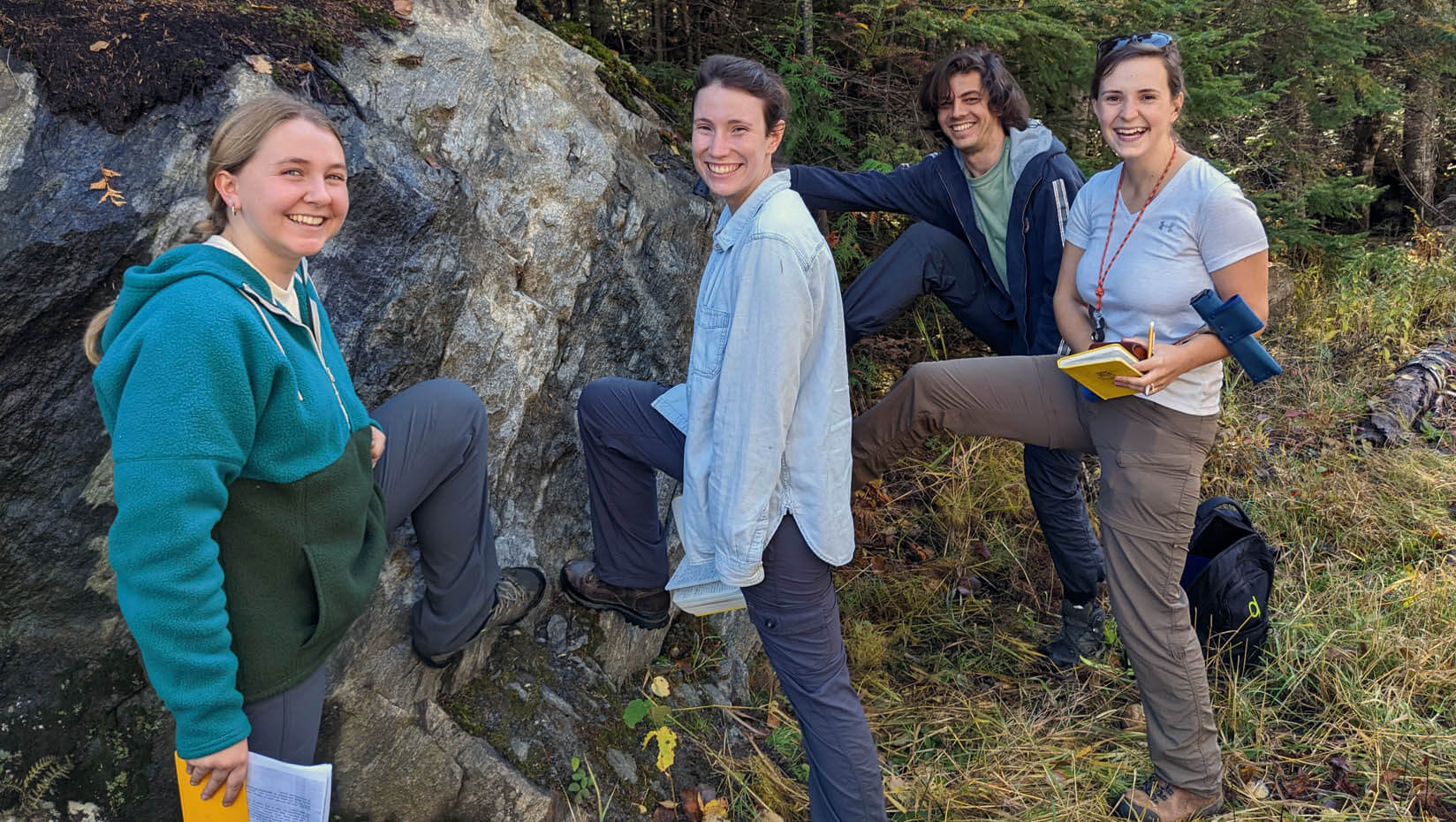
Cruz-Uribe receives NSF award to make geological dating methods more accessible
Editor’s note: Updated Feb. 2, 2023.
Geologists have long determined the age of rocks and minerals by measuring the decay of certain isotopes, but the process can be time consuming and labor intensive. Alicia Cruz-Uribe, associate professor of mineralogy and petrology in the School of Earth and Climate Sciences at the University of Maine, is hoping to make the use of two important isotopes for geochronology — Rubidium-87 and Strontium-87, or 87Rb and 87Sr — more accessible for widespread use.
The radiogenic decay of 87Rb to 87Sr is an important “clock” geologists have used for over 80 years to measure the age of rocks and minerals. However, these measurements have traditionally required time-consuming lab work. Technical advances have enabled Rb-Sr measurements in situ, which is easier and less expensive for many labs, but there are still barriers to their widespread use due to a lack of appropriate reference materials, as well as questions about what Rb-Sr dates record in different rocks.
“The Rb-Sr system has the potential to record processes as young as a million years, and as old as the solar system,” says Cruz-Uribe. “So, to be able to harness the information in this system with analyses that can be done on very specific textures within a rock, instead of having to crush an entire rock and lose the context of the minerals you want to date, is a game changer for the scope of geochronologic processes that can be undertaken.”
Cruz-Uribe and her team at UMaine and Penn State aim to develop two Rb-Sr reference glasses that have the same compositions as natural mica minerals that can be used by labs to significantly expand the use and application of Rb-Sr dating. They will also determine Rb-Sr dates from three well-studied geological sites — the Mooselookmeguntic contact aureole in western Maine, the Franciscan Subduction Complex in California and the Ivrea-Verbano Zone in the Italian Alps — to provide key context for similar data elsewhere.
The technique will not only allow scientists to accurately date mica, one of the most common minerals in Earth’s crust, but it will also provide dating results in less than an hour, compared to the weeks to months of traditional methods.
“Most of the current geochronometers that geologists use to constrain the age of rocks take advantage of the U-Pb — uranium-lead — decay system. However, the minerals that contain significant quantities of uranium like zircons are very sparse and do not usually actively participate in reactions that are occuring in the major minerals in a rock. The Rb-Sr system can be measured in major rock-forming minerals such as micas and feldspars, and so this system expands our geochronologic toolbox in many ways,” says Cruz-Uribe.
While developing this project, Cruz-Uribe was also a participant in the University’s Enhanced Mentoring Program with Opportunities for Ways to Excel in Research (EMPOWER). Last year, Cruz-Uribe worked closely with her mentor, Heather Leslie, professor of marine sciences and Director of the Darling Marine Center, as part of a cohort of supported faculty.
The National Science Foundation (NSF) awarded Cruz-Uribe $391,286 for her research. The award began Jan. 15, 2023.
Contact: Sam Schipani, samantha.schipani@maine.edu
